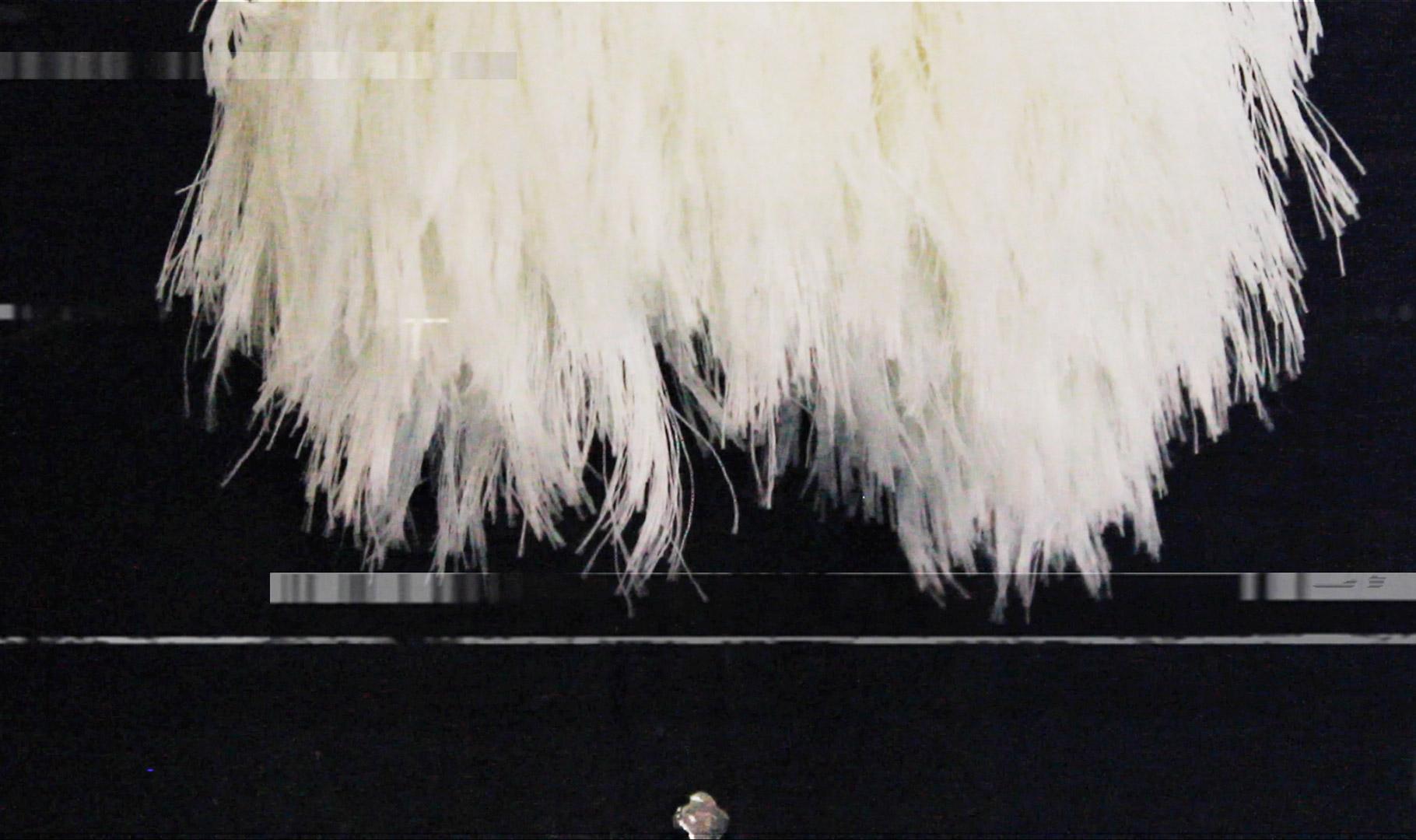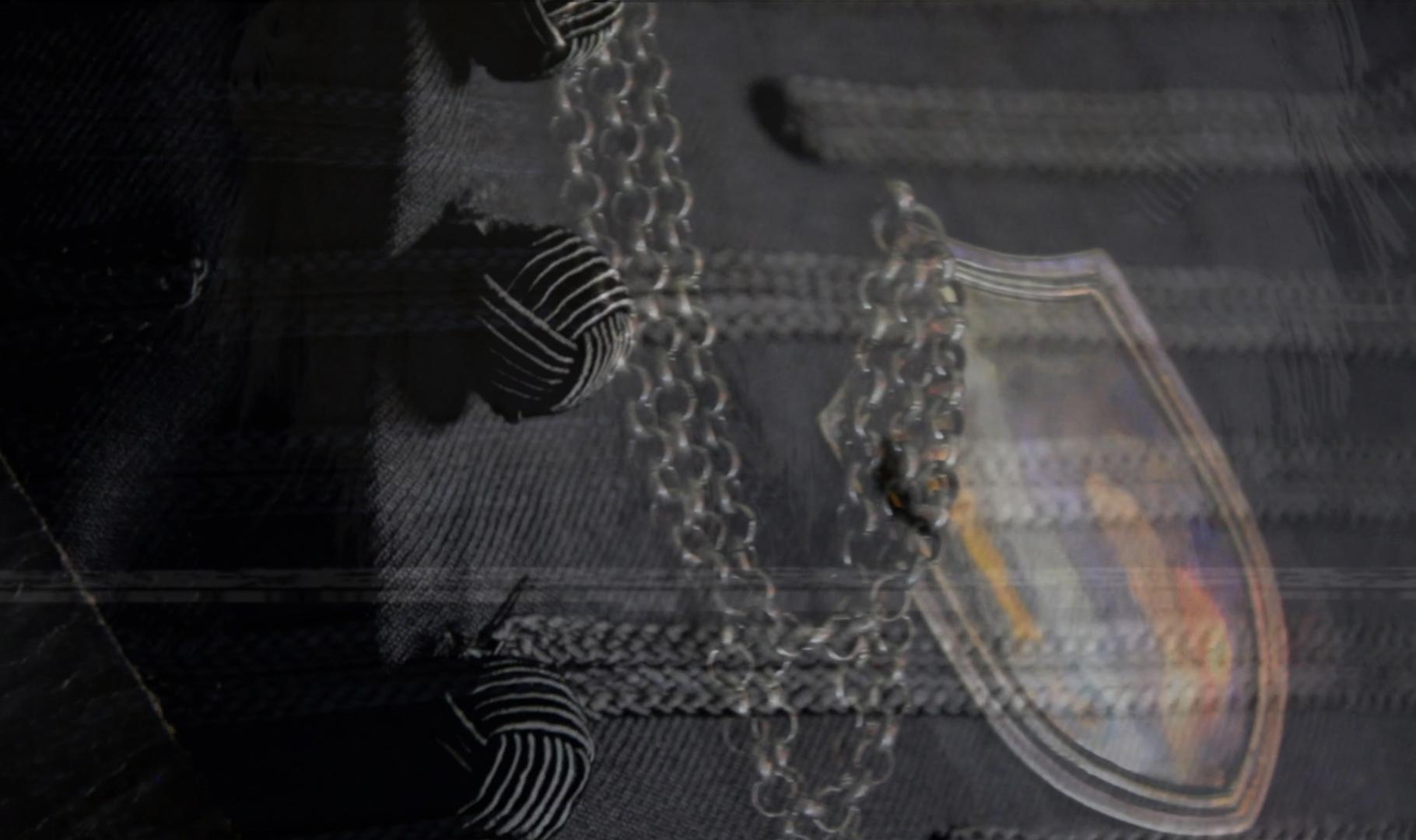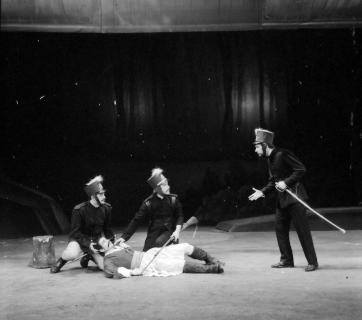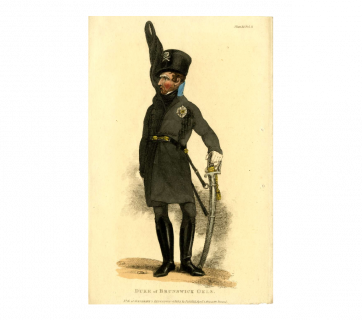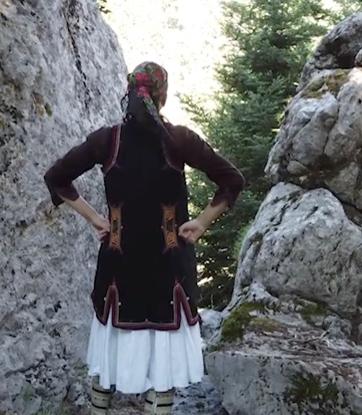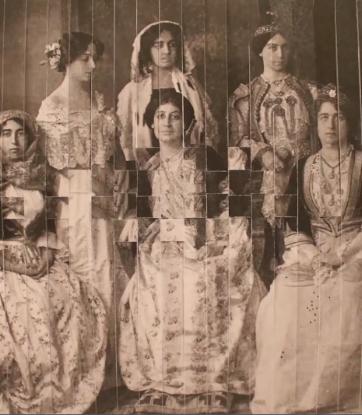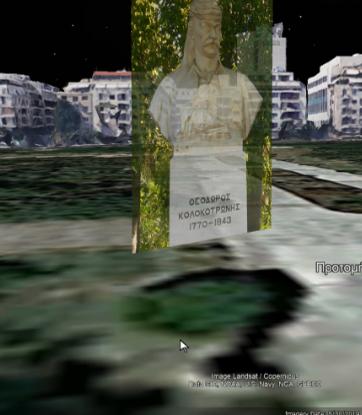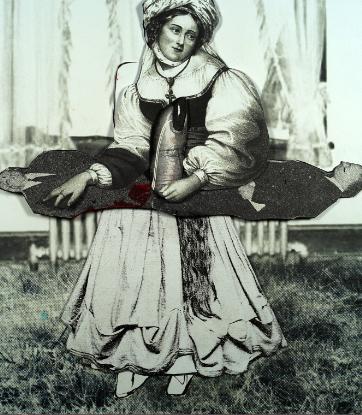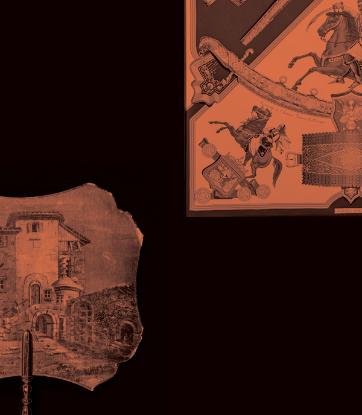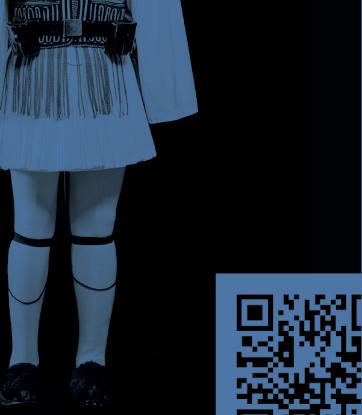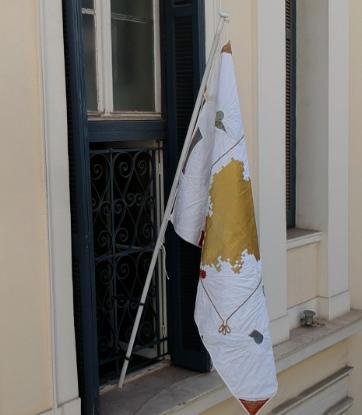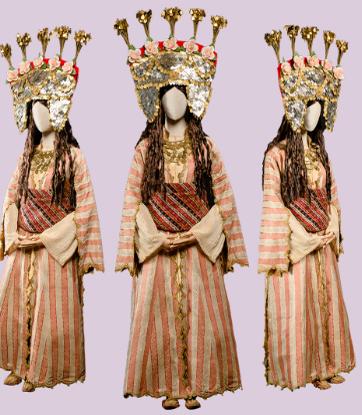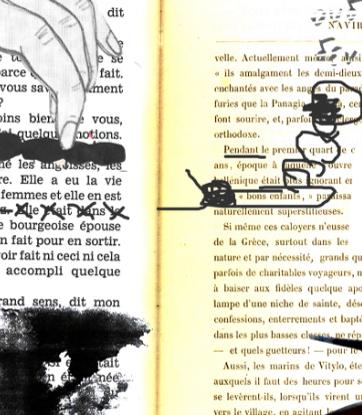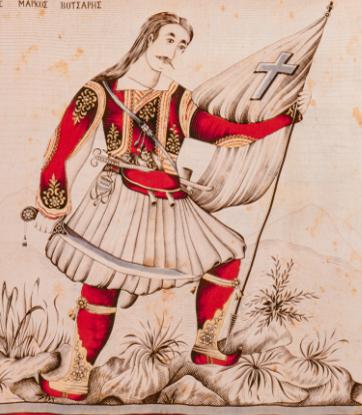Under the name of Sacred Band. The “perfect analogue” in three acts.
Through an audiovisual montage, Mary Thivaiou attempts to approach the clothing identity of the Black-clad men1 of the Sacred Band, the battalion of selected soldiers brigaded by Alexandros Ypsilantis in 1821, in Focsani.
- 1. In the appendix of his work New Political Constitution (1797) Rigas Feraios envisions the uniform of the future regular army, according to the standards of European armies of the Napoleonic era. “The uniform of the Greek soldiers is heroic: black anteri white shirt and red tights or socks {…} their arms are the rifle and the bayonet, while they wear a helmet on the head”. It is speculated that the men of the Sacred Band, influenced by Rigas’ work, adopted the black uniform, which led to them being referred to as “Black-wearers” or “Black-clad”.
With the National Historical Museum’s tunic of Konstantinos Xenokratis (1803-1876) as the only known token of their uniform, the artist first looks back on visual archival evidence of the time that “illustrates” people and facts.
However, in order to recreate the “picture” of the Sacred Band uniform, she also turns to later efforts to revive their costume, as attempted on three different occasions (acts): in the beginning with the historical costumes worn to depict the Sacred Band corps during the centenary celebrations for the Greek Revolution, organized in the Athens Stadium by the Lykeion ton Ellinidon in 1930; in the middle with the costumes worn in the historical drama “Sacred Band” by George Kitsopoulos staged by the National Theatre of Northern Greece in 1973 and at the end with the recent revival of the Sacred Band uniform by the “Dionyssios Solomos” Friends of Music Association in Messolonghi.
While some are more “authentic”, “perfect analogues” of the real, and others more a reflection of it, these costumes bring out interesting aspects of the garment’s role as a reminder of the person, in remembrance of the hero or in his honour. At the same time, they reflect the society that created them according to the attitudes of each age.
In addition, in order to better document the Sacred Band uniform, excerpts are gleaned from a surviving lecture to the students of the University of Athens on the eve of 25th March 1919, in which Sacred Band scholar Konstantinos N. Rados describes the individual parts of the uniform in detail.
The visual artist, as a conceptual videographer/biographer of the Sacred Band uniform, searches for corresponding written references to the uniform of the Messolonghi Philarmonic as the only ensemble still in existence. She matches up close-up shots of the uniform to the information or the documents from each time period, creating an one-to-one connection. The shots succeed one another, indicating the transition from the past to the present tense of the narration and vice-versa. In addition, with techniques such as slow motion, she “forces” us to notice the detail. The “agitated” rhythm of the soundtrack intensifies and completes the sequence of the pictures. Finally, she incorporates visuals that evoke barcodes into the frames. They move and change shape depending on the soundtrack, and it is as if the Sacred Band dress code is revealed every time the components of the uniform are “read”.
Within the triptych of Object (the garment, in this case) – Image – Written Language that Thivaiou uses, as well as within the pairing of one field with the other, one can find eclectic affinities in the way meaning is created in the museum. On the other hand, the quick switching between frames and the conciseness with which the Sacred Band members biography is summarised gives the work aspects of a film trailer. Moreover, her work carries a feeling of being both anachronistic and multi-temporal, as with many theatrical ventures today: they are simultaneously in the here and now, and in the there and then.
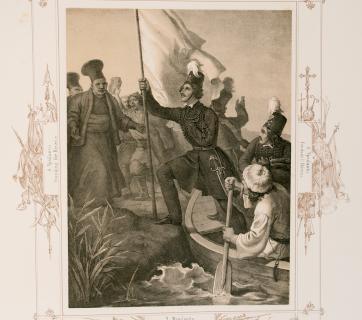
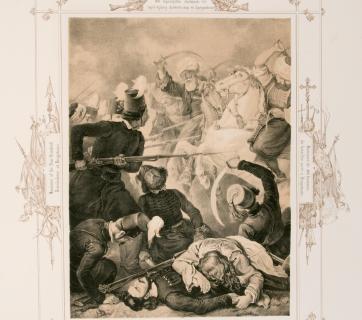
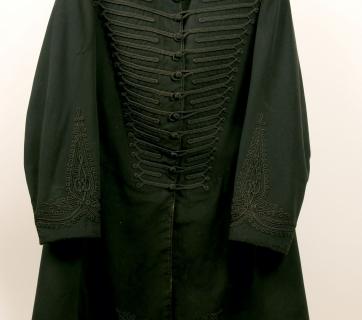
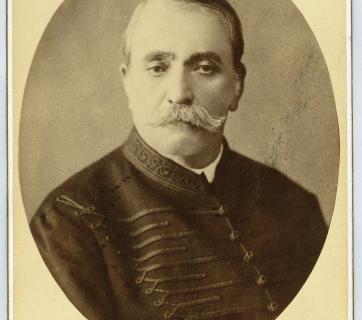
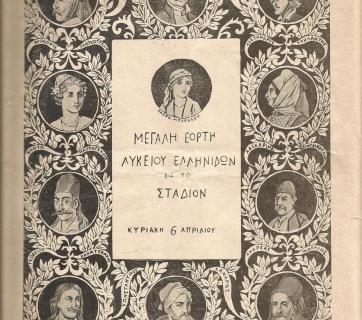
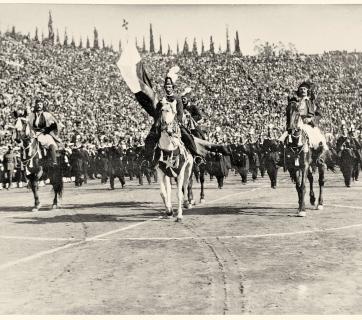
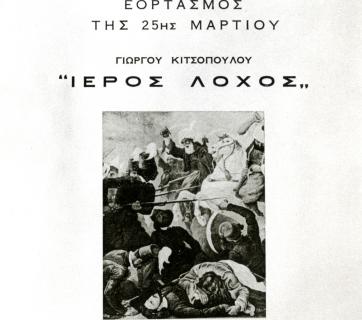
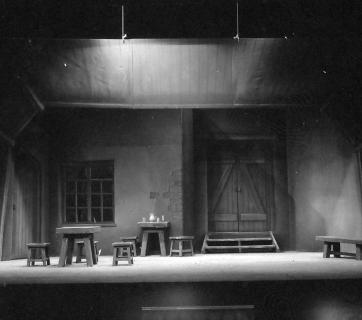
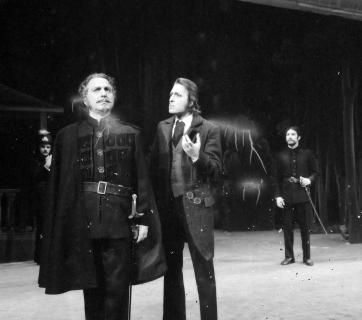
Tania Veliskou studied History and Archaeology at the Aristotle University of Thessaloniki, receiving scholarships from the Tsagada Legacy Fund for her performance in the programmes of Folklore and Social Anthropology. With a scholarship from the “Maria Heimariou” Foundation, she undertook postgraduate specialisation studies in Museology at the Department of Museum Studies of the University of Leicester, U.K.
She has participated in research programmes at the Aristotle University of Thessaloniki on the documentation and management of costume collections, as well as in folklore research in situ in Northern Greece. She works as a curator at the Museum of the History of the Greek Costume of Lykeion ton Ellinidon, primarily on museological research, museography design and the curation of thematic exhibitions. She is a member of the Hellenic Costume Society.
Mary Thivaiou
Mary Thivaiou
Zoi Kona
Penny Saccopoulou - Valtazanou
Tania Veliskou
National Historical Museum, Athens, Greece, and Nicoletta Zygouri and Androniki Markassioti, curators, National Theatre of Northern Greece, and Nikos Kolovos, Artistic Director and Ada Liakou, Archives-Library-Website-New Media Office, “Dionyssios Solomos” Friends of Music Association, Messolonghi, and Dimitrios Folias, Chairman of the Board and Gerassimos Koutsangelis, Secretary
